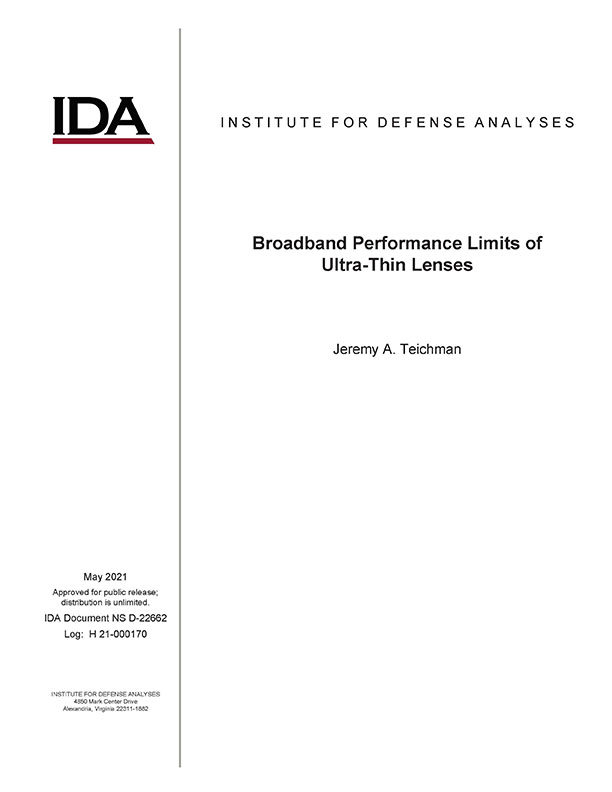Broadband Performance Limits of Ultra-Thin Lenses
May, 2021
IDA document: D-22662
FFRDC: Systems and Analyses Center
Type: Documents
Division: Science and Technology Division,
Science, Systems and Sustainment Division
Authors:
IDA document: D-22662
FFRDC: Systems and Analyses Center
Type: Documents
Division: Science and Technology Division
Authors:
Authors
Jeremy A. Teichman
See more authors

